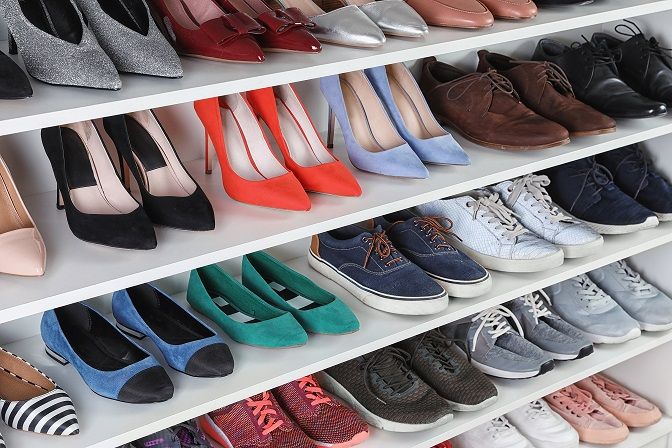What Can Improve the Outlook for Footwear?

Lucy Reece Raybould, chief executive officer of the British Footwear Association (BFA), discusses the findings of the latest World Footwear Yearbook and considers what brands and businesses in the UK can do to improve the sector’s outlook.
The phrase “growth accumulated over a decade wiped away” is not what we wanted to read in the 2021 World Footwear Yearbook – the eleventh annual report that analyses the worldwide footwear sector’s performance in the preceding 12 months. As usual, it is split into two parts: the first being a deep analysis of the industry in 2020 and the second providing detailed analysis of 84 different markets, including the United Kingdom.
In 2020, footwear production and exports fell by 15.8% and 19% respectively. Perhaps the only silver lining is that the World Footwear Experts Panel had predicted an even sharper drop that, thankfully, didn’t materialize. WorldFootwear.com explains: “The COVID-19 pandemic severely hit the footwear business and in 2020 production fell by almost 4 billion pairs, wiping way all the accumulated growth over the previous ten years.” For your reference, the European Union represents the fourth largest consumer market for footwear with 1,763 million pairs consumer in 2020.
Brexit and the COVID-19 pandemic have undoubtedly caused headaches and heartaches in the footwear trade. For British footwear businesses, it would be easy to look at the numbers, feel disheartened and see the next five years as a mountain to climb rather than a solitary hurdle to jump across. Part of our role at the British Footwear Association is to quell some of this anxiety, provide a sense of community and look for opportunities on the horizon. It is important to remember that customers still want to buy, and they still want to be impressed. The consumer market is looking for brands and businesses that are willing to boldly differentiate themselves and innovate sustainably.
It is also worth considering who is excelling in the market right now. We know athleisure and sneaker brands are enjoying the surge in home-working and casual ‘loungewear’ that has become a COVID-19 staple. We also know that sustainability is a driving force, with Vans unveiling its new Eco Theory collection, for example, and Vagabonds, Vivobarefoot and Allbirds also committing to reduce emissions and operate using ‘regenerative’ materials. There is almost certainly a push towards collaborative collections too, with Kickers, Crocs, Birkenstock, and Christian Louboutin partnering with celebrities, make-up brands, clothing experts and fashion designers. Businesses also see the value in footwear and are willing to launch new ranges, such as apparel brand Rixo and its new nine-piece shoe offering.
In fact, when one starts looking for good news, it really does appear! Dr Martens reported a 50% year-on-year increase in wholesale revenue in the three months to June 2021 (up 23% on a two-year basis), with its ecommerce revenue also soaring by 155% year-on-year. Similarly, second quarter sales at Skechers increased 127.3% in the three months to 30 June 2021, driven by wholesale increases of 150.2% at Skechers’ European subsidiaries most notably in the UK and Germany. Even Crocs has racked-up record sales!
If we factor in this drive for comfort, the importance of cross-industry collaborations, the general industry landscape and then combine this with global marketing trends… we can begin to build a picture of what SMEs can do to thrive, not simply survive. Deloitte, for example, points to “demystifying purpose” explaining that “customers align with businesses that share their values,” and that “companies that act with purpose are more positioned for success”.
Perhaps it is a bold statement, but I think ‘purpose’ is the keyword for 2021 and 2022. Now is not the time to try and be all things to all customers. Footwear businesses with a clear sense of identity, strategy and purpose are the ones that are going to cut through the noise, generate loyalty and stay on-message across core issues like sustainability. The old cliché of a ‘mission statement’ may in fact be a first step to cementing what it is a business stands for. It will be interesting to see this brought to life at Moda among the footwear exhibitors in attendance.
To return to my opening question – What can improve the outlook for footwear? At the BFA, we are continuing to advocate for the footwear sector on Brexit and trade issues and, unfortunately, none of us can predict the next phase of COVID-19. Instead, we can focus on improving the outlook by striving towards more streamlined, purposeful businesses that have powerful value propositions. It’s something we are committed to at the BFA, and we know many of our members feel the same way.
Find out more about becoming a member of the BFA, here.


